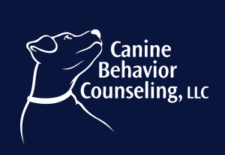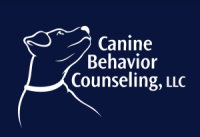Fearful dogs avoid people or things that frighten them, may seem depressed or disinterested and sometimes lunge or do a barking display to make what they’re afraid of go further away. If you’ve decided to share your life with a shy dog, take heart. The following information can help you understand what he is feeling and give you ways to help him get better.
Different Kinds of Shyness
The most common kinds of shyness in dogs are:
Social shyness, where the dog is fearful of unfamiliar people or certain kinds of people. Dogs like this are sometimes described
as “taking a while to warm up,” “one man dogs” or “protective.” They are usually fine with a certain person once they get to know them. Examples are dogs who are afraid of men or big men or men with beards, dogs who are uncomfortable around children, and dogs who bark at the sight of people with unusual gaits. Dogs can also be shy with other dogs.
Context fears, where the dog is afraid of certain kinds of situations. Examples are dogs who are afraid of going to the vet, panic during car rides, avoid traffic or are uncomfortable in new places.
Sound sensitivities, where the dog is afraid of sudden loud noises. These dogs flatten and try to escape when a car backfires, or pace and salivate during thunderstorms or fireworks.
Why Is He Like This?
Fear is very common in all animals. Although it’s possible that a fearful dog has suffered abuse or a bad experience, most of the time fears result from a combination of a genetic predisposition and some lack of experience, especially in the first months of life. For instance, a dog may have missed out on becoming socialized to certain kinds of people by simply not being around them enough when he was a puppy.
Will He Get Better?
Most fearful dogs can be helped to gradually improve. This is a long, slow process in most cases and requires patience. Shy dogs are not for everybody. They need caretakers who have compassion and perseverance.
What Can I Do?
The best thing for a fearful dog is to expose him to what frightens him but at a milder intensity and combined with a fun or positive association. So, a dog who is afraid of children might start to feel more comfortable if he regularly sees children but at a distance where
he doesn’t feel too worried. Then, if his guardian praises, pats him and gives him treats after the dog has noticed the kids, the dog might start to see the kids as good news: “Wow, great things happen to me when kids are around!”
A dog who is afraid of traffic would benefit from audio tapes of traffic sounds, time spent near quieter streets, all combined with games,
treats and happy talk from his guardian. As the dog improves, time can be spent on busier and busier streets. Dogs learn strongly from
association and positive reinforcement.
Should I punish my dog for growling?
No. When dogs growl, they are saying “I am scared, you are really freaking me out!” Just remain calm and offer your very scared dog a treat. If he is too afraid to eat a treat, then put some space between you and what ever the dog is afraid of until he is comfortable to eat a treat.
How Can I Help My Shy Dog Get Used to Visitors?
The best possible strategy is to let the dog go at his own pace. Any kind of pressure or coercion to make contact usually makes things worse. Let the dog hide if he needs to, investigate things and come to people when he feels ready. People can offer or toss treats but instruct them to not try patting the first time the dog comes to investigate them. This can be very hard for people to do, so remind them to keep their hands to themselves early on.
For more detailed information on how to make your shy dog feel safe in different situations contact me by phone or email! I am always happy to help owners understand why their dog may be acting aggressively and how to help them!

